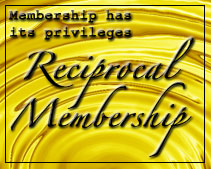Early history of Baguio City, Philippines
January 31, 2011
Under The Spanish Colonizers
It was sometime in the first half of the 19th century when Spanish colonizers started to explore the mountains of Northern Luzon. What they saw was a land of fertile valleys, pine-clad hills and mountains, lush vegetation, and an abundance of minerals such as copper, gold and ore. Stories about this new discovery spread fast in the capital that Spanish friars, soldiers, and even fortune hunters started trekking up to the mountains. They came to explore and conquer the region, convert the natives to christianity, and exploit the rich natural resources available.
The Spanish colonial government did not find it easy to immediately establish their authority in the region. They realized that the proud mountain people were difficult to rule and subdue. In the beginning, they had numerous encounters and skirmishes with fierce mountain tribes.When the Spanish colonizers started dividing the land into local government units called”commandancias,” the natives objected and refused to be a part of it. Instead, they moved higher and deeper into the mountains. Realizing this problem, the Spaniards decided to divide the land into “rancherias” and placed it under the responsibility of the landed aristocracy.
The Arrival of The Americans
When the Americans first came to Baguio in 1900, it was not yet even a town. It was then only a”rancheria” whose dominant feature was a large, low-lying area called Kafagway. There were only a few houses and there were no roads. The rancheria was owned by Mateo Carino who was at that time the wealthiest man in Benguet Province. During the dry season it was a pasture for herds of cattle and horses, but much of the year, it was a marshland with a shallow lake where residents hunted for ducks and snipes. Kafagway roughly covered the same area as the present city.
The Americans found Baguio an ideal site for a future city and a summer retreat from the sweltering heat of the lowlands. The hills were grassy and studded with pine trees and above all it had a cool and pleasant climate. The Americans also found a good source of water to supply the needs of a city. Gov. William Howard Taft and other officials did not hesitate to proposed that this be the location for the summer capital and health resort of the Philippines.
In November 1900, the Americans established the first civil government in Benguet. Kafagway was designated as the capital and was later renamed to Baguio. This new name was apparently derived from the native Ibaloi word”bigyiw,” which is a moss-like green plant that grew around the area where Burnham Park is now located. Plans were immediately made to construct the first road to connect Manila with the mountain regions. This project was started in 1901 and Maj. L. Kennon was designated to supervise the construction of the Bued Canyon route which was later called the Benguet Road. This access road was completed three years later and ultimately renamed as Kennon Road, in honor of its builder.
On June 1, 1903, a resolution was passed by the American colonial government, naming the town of Baguio as the summer capital of the Philippine Archipelago. The resolution also called for the construction of suitable buildings, the establishment of 19 townships, and the putting up of appropriate transportation. This was to prepare Baguio as the residence of all officers and employees of the Insular Government during the summer season when the climate in the lowlands was quite hot and very humid. A suitable site was selected for this purpose and which was later known as Camp John Hay.
Following are some of the other events that occured during the administration of Baguio under the American Colonial Government.
* 1903: Establishment of the first telephone system for Baguio.
* 1905: The Baguio Country Club was organized.
* 1906: Civil government authorizes the sale of residential and commercial properties in Baguio.
* 1907: Construction of the Baguio General Hospital is started.
* 1908: Philippine Constabulary School (forerunner of the Philippine Military Academy) was moved from Intramuros to Baguio.
* 1910: Water supply system for Baguio becomes operational.
* 1911: The first automobile travels to Baguio from Manila through Kennon Road.
* 1913: Establishment of Sanitary Camp.
* 1919: An airplane lands for the first time at the Baguio airport.
* 1924: A hydroelectric plant becomes operational & construction of the Baguio Central School is completed.
Baguio became the second chartered city in the Archipelago in September 1, 1909 and the townships were later reduced to 13 municipalities. The city prospered in the years before the outbreak of the Second World War.
The Years During The War
It is said that the war in the Philippines began and ended at Camp John Hay. During the early part of the 2nd World War, Baguio was the initial bombing target of the Japanese air forces and the city was in ruins. When the Japanese Imperial Army captured Baguio, they converted Camp John Hay into their garrison and a part of it was used as a concentration camp.
In 1944, when the American forces led by Gen. Douglas MacArthur landed in Leyte, Gen. Yamashita moved his headquarters to Baguio. The puppet Philippine government under Pres. Jose Laurel was also set up in the city. Finally in 1945, American and Filipino forces advanced toward Baguio to liberate it from the Japanese forces. In the process, Baguio suffered intensive artillery shelling and aerial bombardment.
The city was destroyed as the liberating forces were flushing out Gen. Yamashita and his army. Many of the residents of Baguio lost their homes and took shelter for about two months at the Baguio Cathedral. Since there was an acute food shortage, Yamashita eventually allowed thousands of Baguio residents to leave the city. The American forces advanced toward the city from the south by way of Kennon Road and also from the northwest through Naguilian Road. There was intense fighting along the way. When the Japanese defensive positions started to fall, Gen. Yamashita quickly retreated north from Baguio. However, he left a small delaying force to cover his withdrawal from the city.
Not aware of the withdrawal of the Japanese forces and still expecting a counterattack, the Americans waited several days before their final assault of Baguio. Somehow Gen. Yamashita and his 10,000-strong army made good their retreat from the city. It was about five months later that the Japanese lost the war in the Philippines. On September 3, 1945, Gen. Yamashita came back to Baguio to sign the unconditional surrender of the Japanese Army. This event took place at the residence of the U.S. ambassador at Camp John Hay.
The Years After The War
From the ruins of World War II, the City of Baguio steadily grew into the commercial, educational and recreational center of the Cordilleras and northern Luzon. Although Baguio ceased to be the official summer capital in 1976, people still continued referring to it as the summer capital of the Philippines. Quezon City has since then become the capital of the country throughout the twelve months of the year.
The More Recent Baguio
A major earthquake devastated Baguio City on July 16, 1990. Many old and new buildings were leveled to the ground and numerous people died. All the three major access roads leading to the mountain resort were closed and many visitors and residents leaving or coming back to the city were stranded. All incoming and outgoing flights were limited only to aircraft involved in rendering aid and assistance to the residents. There were no commercial flights available and the city was left with no means of transportation for getting in or out of Baguio.
In the days that followed, the people of Baguio were running low on food, supplies, and their other basic necessities. There was no electricity and the supply of water was getting to be very scarce. Somehow the residents were determined to go on with their lives. There was continued fear among the residents when the earthquake aftershocks persisted. They comforted each other and they still had their high hopes for their safety and the future of their city. Throughout the difficult months that followed, the people worked hard to put their city back into what it was before … if not even better.
Today, Baguio is once again a bustling and vibrant city. The residents have returned and the visitors and tourist have started to come back. The city is now a self-governing member of the Cordillera Autonomous Region (CAR). Baguio continues to remain as an important copper and gold-mining center. It still is an important focal point for commerce, trade, and education north of Metro Manila. There is no doubt that a better Baguio has emerged from the ruins of the great earthquake of 1990.
Are these articles useful for enhancing your wine and dine experience in the Philippines. Do they also help you with travel, leisure, vacation, dining out, nightlife and other leisure activities plans in Manila and other major cities of Philippines? Yats Restaurant hopes to provide you with ample information so you can plan your trips to Pampanga Angeles City Clark Freeport Zone whether you are travelling from Manila or other Asian countries such as Hong Kong, Shanghai, Singapore, Malaysia or Korea.
Restaurant reservations in Manila Philippines, planning of menu, selection of wine for dinner and booking a private function and event in Angeles City Clark Freeport Zone can all be handled. Yats Restaurant and Wine Bar has been regarded by many to be the premier restaurant north of Manila Philippines. Its 3000-line award-winning restaurant wine list has kept many wine lovers happy dining in this restaurant in Angeles City Clark Philippines for over a decade.
Yats Restaurant and Wine Bar was built by Hong Kong-based Yats International in 2000 to provide a world-class cozy fine dining restaurant, business meeting facilities and venues for private dinners and functions in Pampanga Angeles City Clark Freeport Zone. Pampanga Angeles City Clark Philippines was selected for this restaurant because of safety, clean air, absence of traffic and proximity to Manila and Subic.
For comments, inquiries and reservations, email Restaurant@Yats-International.com or call these numbers:
(045) 599-5600 0922-870-5178 0917-520-4401
Http://www.YatsRestaurant.com
Getting to this fine dining restaurant of Angeles City Clark Freeport Zone Pampanga Philippines
How to get to this fine-dining restaurant in Clark Philippines? Once you get to Clark Freeport, go straight until you hit Mimosa. After you enter Mimosa, stay on the left on Mimosa Drive, go past the Holiday Inn and Yats Restaurant (green top, independent 1-storey structure) is on your left. Just past the Yats Restaurant is the London Pub.









